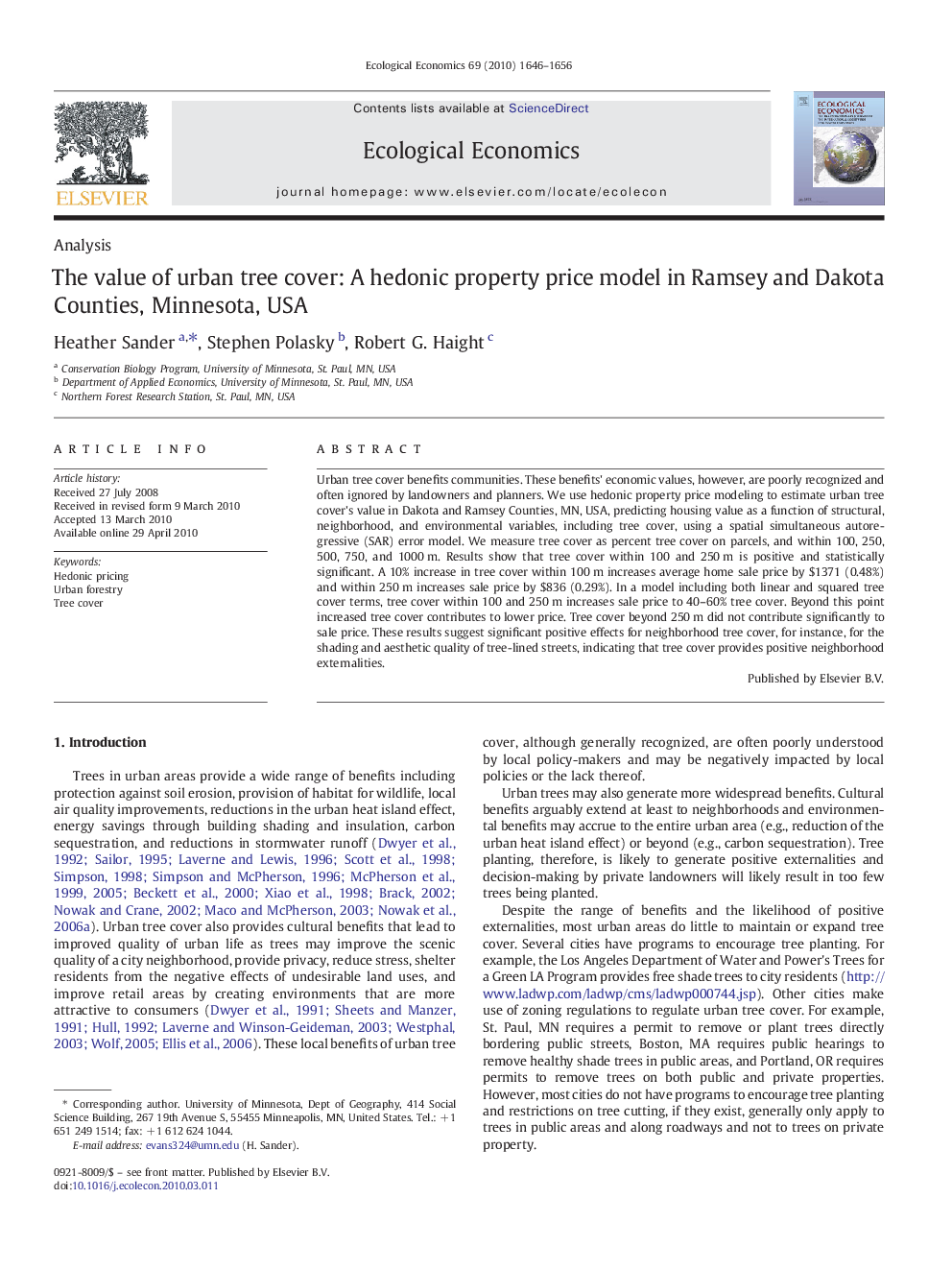| Article ID | Journal | Published Year | Pages | File Type |
|---|---|---|---|---|
| 5050939 | Ecological Economics | 2010 | 11 Pages |
Urban tree cover benefits communities. These benefits' economic values, however, are poorly recognized and often ignored by landowners and planners. We use hedonic property price modeling to estimate urban tree cover's value in Dakota and Ramsey Counties, MN, USA, predicting housing value as a function of structural, neighborhood, and environmental variables, including tree cover, using a spatial simultaneous autoregressive (SAR) error model. We measure tree cover as percent tree cover on parcels, and within 100, 250, 500, 750, and 1000Â m. Results show that tree cover within 100 and 250Â m is positive and statistically significant. A 10% increase in tree cover within 100Â m increases average home sale price by $1371 (0.48%) and within 250Â m increases sale price by $836 (0.29%). In a model including both linear and squared tree cover terms, tree cover within 100 and 250Â m increases sale price to 40-60% tree cover. Beyond this point increased tree cover contributes to lower price. Tree cover beyond 250Â m did not contribute significantly to sale price. These results suggest significant positive effects for neighborhood tree cover, for instance, for the shading and aesthetic quality of tree-lined streets, indicating that tree cover provides positive neighborhood externalities.
